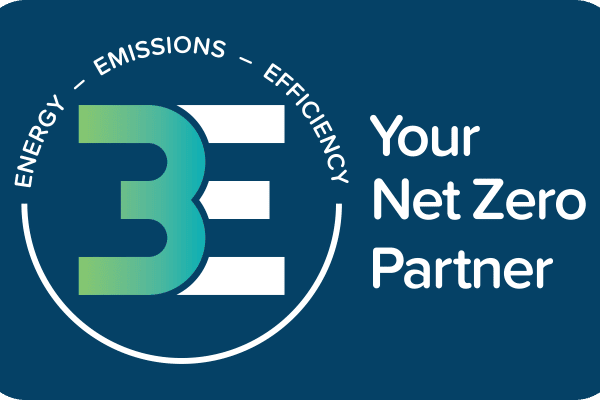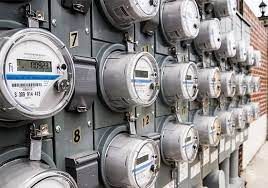Energy efficiency is a jobs machine – and local governments can get it cranking
Countries around the globe are facing unprecedented health emergencies and economic challenge. Australia, faring better than many others on the health front, is nevertheless in the midst of its greatest economic crisis in decades. ¹
We are several months in, and it is already tough out there. However, between now and Christmas the full brunt of this economic shock will hit millions of Australians.
Businesses are going to the wall. Households that were comfortable just a few months ago are suddenly struggling to pay their bills. And already vulnerable Australians are put under even more pressure.
There’s been a lot of talks recently about precisely how to kick-start Australia’s economy in the wake of the COVID-19 pandemic, particularly in the energy sector.
The momentum towards renewables is unstoppable. *
However, there is another, often unsung, side to the energy transition: how efficiently and productively we use our energy. *
It isn’t as appealing as solar panels on roofs, or as obvious as wind turbines sitting on rolling hills. *
But it is crucial, and importantly it is a real jobs machine. *
That is how it was described by the International Energy Agency (IEA), and the data backs them up. The Special Report on Sustainable Recovery, produced by the IEA in partnership with the International Monetary Fund, includes a comprehensive analysis of energy-related stimulus options. Energy efficiency in buildings – both retrofits and new builds – topped the charts. *
Here in Australia, a major drive to improve the energy efficiency of buildings and industry could deliver over 120,000 job-years of employment.
Energy efficiency jobs machine doesn’t just create jobs: ¹
- It eases energy bill stress on struggling households in a period of unprecedented financial stress;
- It makes our businesses more productive and resilient to shocks, especially energy-intensive businesses; and
- It is a source of plentiful, low-cost emission reductions at a time when our national government and every state and territory is committed to identifying and unlocking such opportunities.
The benefits of energy efficiency are so profound we simply cannot afford not to have this machine running at a time of unprecedented economic crisis. ¹
This is so crucial; faced by both global recession and dangerous climate change, energy efficiency is a solution at the nexus of these dual challenges.
– according to Luke Menzel, CEO, Energy Efficiency Council ¹
Energy efficiency is the art and science of optimising or upgrading buildings so they are healthier, cheaper to run and more comfortable for their users.
Efficiency retrofits and new builds consistently top the charts in comprehensive analyses of energy-related stimulus options by organisations such as the International Energy Agency, the International Monetary Fund and Australia’s own Beyond Zero Emissions and Climate Council. *
A major push to upgrade Australia’s buildings has been backed in by everyone from the Australian Council of Social Service to the Business Council of Australia – not two organisations that you often see on the same page. *
As energy-efficient buildings are more comfortable, people are healthier and happier. And as the industry is more productive, businesses are more competitive.
Plus, energy efficiency saves money, making companies and organisations more resilient to economic shocks.
Local Councils are a major component in the energy efficiency jobs machine
While State and Federal Governments can scale up existing programs, Local Governments have a tremendous opportunity to invest in energy efficiency to stimulate local economies and support job growth.
There are 537 Local Governments Australia-wide and employs over 194,000 people which is nearly 10% of the total public sector. ²
Councils support communities by providing important infrastructure and services. In fact, councils are one of the country’s major providers of infrastructure, and together are responsible for more than $380 billion of fixed assets and land.³
All of the buildings and facilities that councils own and manage consume energy, either directly in use or through maintenance, and energy costs are a significant part of council budgets.
Investing in clean energy provides an opportunity for councils to renew their infrastructure, save energy costs and meet sustainability objectives. In so doing, councils can directly stimulate the local economy and can use the savings created to invest back into the community.
In Australia, there is a number of local councils that are already leading the way.
As an example, the Eastern Alliance for Greenhouse Action (EAGA) is a joint collaboration effort by eight local councils in Melbourne’s eastern suburbs to address climate change by reducing greenhouse gas emissions.
Several Member Councils, including Boroondara City Council, Yarra Ranges Council, Maroondah City Council have already implemented large Energy Performance Contracts with lighting, HVAC and mechanical upgrades and a range of other energy conservation measures. These projects combined have poured over $7 million into the local economy and supporting local jobs. These projects are estimated to generate well over $700,000 in energy and maintenance savings and reduce greenhouse gas emissions by more than 5,100 tonnes of CO2-e every year.
Investment in these EPC projects helps create jobs and supports the local economy, plus the energy savings may be used by these councils to invest in other local community programs and potentially providing some rate relief to businesses and households impacted by the economic recession.
Other EAGA member councils including the City of Whitehorse, Knox City Council and the City of Monash are currently implementing energy efficiency upgrades to deliver energy and environmental savings.
So, if the savings are so significant, how can councils get their ratepayers onside for investments in supersensible energy efficiency upgrades?
The key is to turn the invisible, visible.
Councils that invest in energy efficiency retrofit projects can use the energy savings to upgrade parks, playgrounds and other public facilities, helping attract new businesses and jobs to the area.
Councils can also use savings to support local businesses and households to improve their own energy use, making them more resilient to economic upheaval and easing the horrible phenomenon known as “bill shock”.
What can Councils do?
Local councils in both metropolitan and regional areas can start by assessing their buildings and facilities for energy efficiency opportunities and look to implement an Energy Performance Contracts – see 7 Secrets to a Successful EPC – or other performance-based energy efficiency projects.
- Have all central plant and equipment – chillers, boilers and HVAC systems – been upgraded and optimised for energy efficiency and improved health and safety?
- Have power factor correction, voltage optimisation and overnight baseload reduction been implemented?
- Are there building management systems installed; and if so, when were they last commissioned and fine-tuned?
- Are there any energy monitoring systems in place to track energy usage and overall building performance?
- Have all the lighting fixtures -internal lighting and streetlamps – been upgraded to LED?
If so, and done more than 5 years ago, newer more efficient LEDs can provide even more savings. There are also lighting controls and sensors that can be retrofitted to recently installed LED fixtures to enhance energy savings.
These are just some of the many areas Councils can look at to improving energy efficiency, reduce operational and maintenance expenses and achieve their sustainability targets all the while supporting and creating jobs through investing in EPC projects.
One of the most effective council-wide energy efficiency strategies is the ones that combine both council facilities upgrades and programs to support local businesses and households.
CitySwitch is a great way to do this. This national program, spearheaded by Australian capital cities, represents more than 600 organisations, 16 per cent of Australia’s office space, a million people and $1 billion of spending power.
Businesses signing up to CitySwitch agree to an energy rating assessment that allows them and their tenants to see their energy consumption.
They can also receive advice on behaviour change and simple upgrades.
The COVID-19 pandemic, while devastating, has also provided us with a circuit breaker.
We have a chance to rethink our priorities, and the future we need to build to be able to thrive.
It may not be high profile and exciting, but investing in energy efficiency will get us back to work quickly, and help secure our economic future.
* Energy efficiency is a jobs machine – and local governments can start it up | by Holly Taylor – www.canberratimes.com.au – last access 24 August 2020
¹ Joint Statement: Energy Efficiency is a Machine for Creating Jobs – www.eec.org.au – last accessed 24 August 2020
² Facts and Figures – Alga.asn.au – last accessed 24 August 2020
³ CEFC Market Report.pdf | www.cefc.com.au – last accessed 24 August 2020






